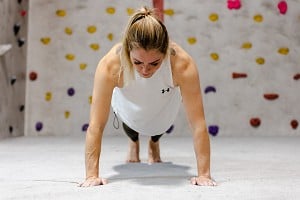
Bouldering is viewed by many as climbing in its purest, most elemental form, the beauty of this being the ease at which you can practise and enjoy climbing without the hassle of excessive gear – be it indoors or out. Additionally, as a discipline that feeds well into sport, trad and other aspects of climbing, it's a fantastic way to hone your strength and technique and increase your repertoire of movements for transfer onto routes. The aim of this article is to give some top tips for improving your bouldering grade both indoors and out for climbers who have some experience, but who might be stuck in a plateau at a particular grade. If you're completely new to the sport, check out our article aimed at beginners.
Climb with better climbers!
As much as it may be bruising to the ego to climb with your friend who burns you off, you will learn more by climbing with more experienced climbers than anything else. Having someone who can both show you good technique and analyse your own climbing from a different perspective is invaluable for improving as a climber. A great tip is to video each other climbing a problem (if you know the people you're climbing with fairly well, otherwise it could be a bit creepy…) You'll be amazed at the variety of techniques used by climbers of different abilities, shapes and sizes and what's more – they may very likely learn something from your climbing!
Variety is the spice of life…
It's tempting to stick to your strengths and burl your way up a steep wall if you have a strong upper body, or pad up a slab if that's more your cup of tea, although in order to become a more all-rounded boulderer it's essential to build up a repertoire of movements on all angles of wall and on all hold types. Slopers might not be your best friends at the moment but mastering a hold type that you're weaker on will reap benefits in the future. If you're keen to boulder outside, vary the crags you climb at – different rock types also add a bit of variety to movements and hold types. Vary your sessions and try problems which challenge you – from steep to slabby, static to dynamic and pockets to pinches…try everything!
Focus on footwork
Learning how to place your feet and how to transfer your bodyweight over your feet is crucial to achieving good body position and hence reducing the energy expended by your arms. By really focussing on using the tip of your toe on small footholds and weighting it fully, you can pivot and turn your hips into the wall easier – giving you more reach and better balance. For outdoor bouldering this is even more important. Practise placing and weighting your feet during your warm up at the crag on an easier boulder – test how much pressure you have to apply through your feet in order to keep your foot on the hold.
Get creative!
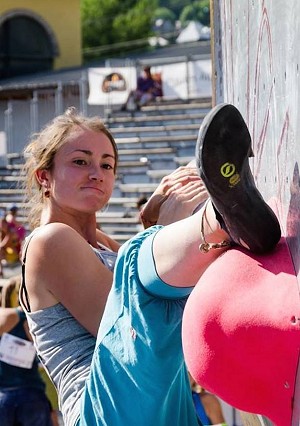
When you're down the wall, try making up your own problems using a mix of holds in the pre-set problems. This is a great way to work your weaknesses by creating boulder problems that focus on a specific area. If your local wall has a tendency to set big dynamic moves, try making up a problem that focuses on smaller, static movements for which you need to keep your feet on. This also makes training more fun, especially in a group with friends. Some of the most creative problems can be found at fun bouldering competitions which occur at walls across the UK throughout the year – get involved at your local wall and you may win a prize as well as improving your bouldering!
Get dynamic!
Bouldering as a discipline is typically more intense than roped climbing – within a small number of movements a problem has to pack a lot of punch in order to make the grade. Additionally, bouldering has a tendency to throw a lot of big, dynamic moves that force you to take your feet off and catch holds. Whilst doing massive full-on dynos (a big jump from one hold to another) looks awesome, in the beginning the most important element to introduce to your bouldering is momentum – moving between holds in a fluid way. This is best practiced on an overhanging wall by swinging up to the next hold, aiming your hips towards the hold in a semicircular path, keeping your arms straight or very slightly bent. Try to think about a problem as a fluid sequence rather than as discreet movements – consider how the body position you're in during one move will affect the next. Moving smoothly and dynamically uses less energy than constant contraction of the muscles – just ensure that you are fully warmed up before making big moves between holds.
Get flexible!
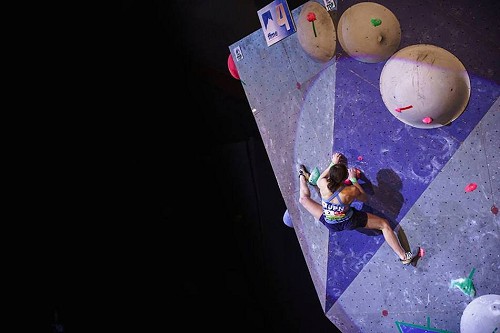
Neglected hamstrings and hard-done-by hips are the scourge of many a climber, and bouldering can be particularly unrelenting for those who are slightly less-than-stretchy. Having the ability to get your foot onto that hold just slightly higher than your hip, or being able to bridge between walls more comfortably without ripping your trousers will undoubtedly see you improve your grade. Rather than wasting energy over-reaching for holds or having to throw uncontrollably if using a lower-than-desired foothold, you can get into a more comfortable and efficient body position to move upwards in control. Stretching isn't the most enjoyable aspect of training but it's essential in injury prevention as well as improving performance. Try stretching your hamstrings by lying on your back and gently pulling your leg towards you, holding onto your calf. For hip flexibility exercises, see this article.
Be sure to warm up for your stretches and do them at the end of a climbing session and not at the beginning when your muscles are 'cold' to prevent injury.
Read the problem
Despite route reading being more common on sport and trad routes, it doesn't hurt to take a long hard look at the 6-7 moves in front of you and figure out the possible sequences. By actively searching for possible solutions before you climb, this process helps you to find solutions quicker and more intuitively. If you become adept at spotting the holds and moves for which heel hooks are useful, or if you can quickly spot where the hand sequence is more complicated than a simple left-right-left, then you will be able to complete problems quicker and in a more efficient style than by simply powering through moves and expending energy unnecessarily. Drawing out the rough shapes of the holds down on paper and using arrows to point the sequence between the holds might seem laborious, but it's a great way to force you to think about what you're doing until it becomes second-nature.
Work the problem
In today's purpose-built bouldering centres, it's easy to feel like a kid in a sweet shop and go from problem to problem, failing on one and jumping straight onto the next. Whilst consolidation of lots of easier problems is important, once you get to a level where you are looking to improve your grade, it's vital to spend time analysing why you are finding certain problems difficult. Choose one session per week in which you select three or four problems as 'projects' which are slighter harder than your current maximum grade and work on them. Try out different methods and get other people involved. Once you figure out the most efficient way to do the problem, try repeating it using minimum effort. Do the same for your outdoor sessions – take the time to focus on just one or two problems.
Warm up properly outdoors
Whilst you may have a warm-up routine sorted for your indoor sessions, on a cold crisp day in winter at the crag it might not be as accessible or relevant. It's much harder to find problems with very easy terrain outdoors and the spread of grades isn't manufactured like in the indoor wall. You might find the easiest grade at the crag is somewhere near your limit, so it's important to take it slow and not jump straight in at the deep end giving 100% on this problem. If you're unsure of your usual warm-up routine, see our article for a description of a typical warm up.
One person's warm-up may be very different from another person's, so be sure to tailor it to your needs. If you have a lot of muscle mass to warm up or if you know that your fingers are generally quite cold, it's important to factor this into your routine. Begin by raising your heart rate – this is generally easier outdoors as there is likely lots of space to run around, even the walk-in to the crag could be suitable if it's more than five minutes or so. Next, do some dynamic stretching and look for the easiest problems. Start by simply weighting holds gently with your feet on and doing small, controlled movements. Build up gradually until you feel ready to give good attempts at the problem and progress through the grades. Be wary of trying harder problems at the end of the day when you are tired – get to know your limit. There is also a range of small, portable fingerboards and warm-up tools to get blood flowing in your fingers available on the market which are great for getting warm at the crag.
Confidence is key!
Bouldering outdoors doesn't have the luxury of thick, squishy matting to minimise impact on landing, rather you have small, firm bouldering mats which have a tendency to move if you land on them in the wrong way. For this reason many people lack confidence in committing to moves outdoors which can affect their performance. Having a decent number of mats to cover the landing area and arranging them appropriately over rocks and tree roots is vital to ensuring a safer landing. For your first outdoor bouldering ventures be sure to go with people who have bouldered outdoors fairly extensively. One boulder's landing is very different to the next and experience coupled with common sense helps to minimise risk. Ensure that people in the group 'spot' each other – this means holding out your hands just behind the climber's waist to support them in a fall. Don't try to catch them, rather attempt to prevent them from falling back or head first onto the mat and try to push them gently away from any obstacles at the foot of the boulder.
In all, enjoy yourself and have fun. An important aspect of bouldering is 'play' – testing your agility, balance and coordination and treating it as a form of vertical gymnastics…it has even been described as vertical chess! Learning how to do wacky moves that seem impossible at first but eventually become do-able and second-nature is a very fulfilling and enjoyable process.
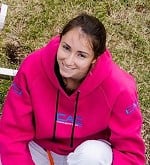
Natalie is UKC's Assistant Editor and a 22 year-old climber based in Edinburgh with over 13 years of climbing experience. She is a former GB competition climber in Lead and Bouldering and has sport climbed up to 8b and trad climbed up to E4. Natalie has coached Junior GB Team members and adults looking to improve their grade over the last 5 years. She is sponsored by Mountain Equipment, Scarpa, and Lyon Equipment (Petzl, Beal) and is a Climbers Against Cancer Ambassador.
- SKILLS: Top Tips for Learning to Sport Climb Outdoors 22 Apr
- INTERVIEW: Albert Ok - The Speed Climbing Coach with a Global Athlete Team 17 Apr
- SKILLS: Top 10 Tips for Making the Move from Indoor to Outdoor Bouldering 24 Jan
- ARTICLE: International Mountain Day 2023 - Mountains & Climate Science at COP28 11 Dec, 2023
- ARTICLE: Did Downclimbing Apes help Evolve our Ultra-Mobile Human Arms? 5 Dec, 2023
- ARTICLE: Dàna - Scotland's Wild Places: Scottish Climbing on the BBC 10 Nov, 2023
- INTERVIEW: Loki's Mischief: Leo Houlding on his Return to Mount Asgard 23 Oct, 2023
- INTERVIEW: BMC CEO Paul Davies on GB Climbing 24 Aug, 2023
- ARTICLE: Paris 2024 Olympic Games: Sport Climbing Qualification and Scoring Explainer 26 Jul, 2023
- INTERVIEW: Malcolm Bass on Life after Stroke 8 Jun, 2023



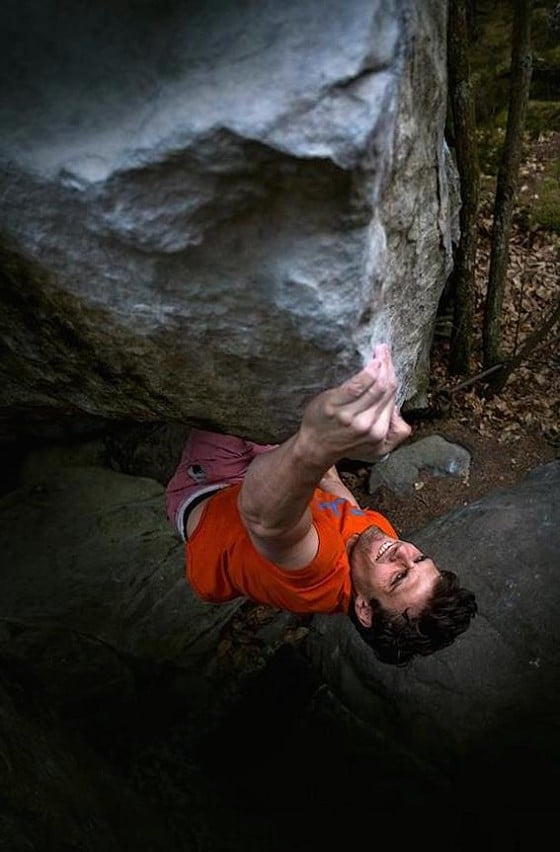
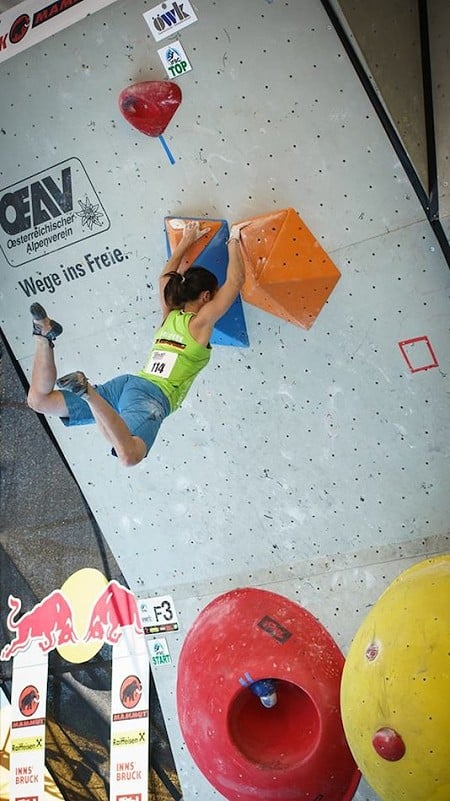
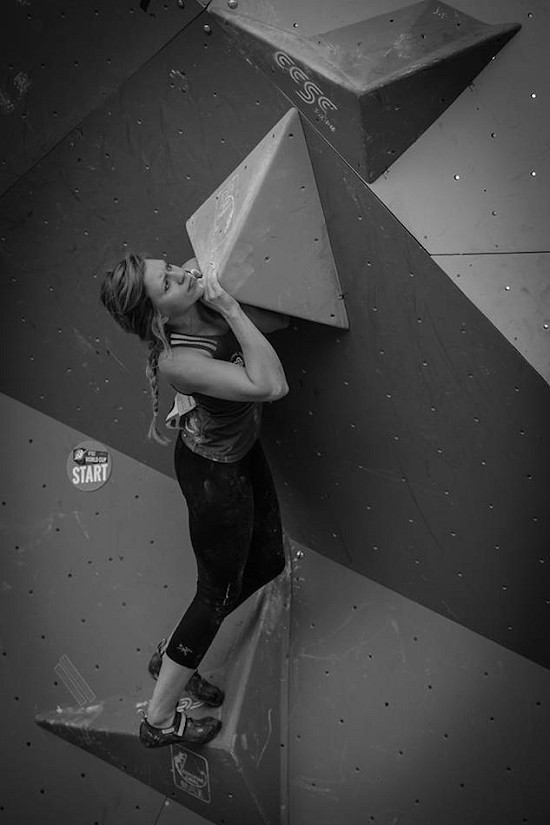

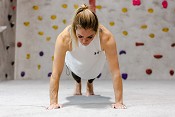
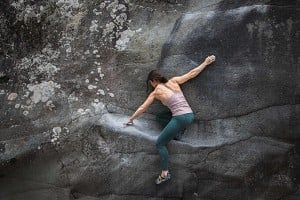
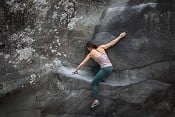
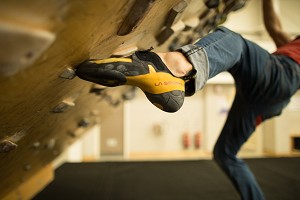







Comments